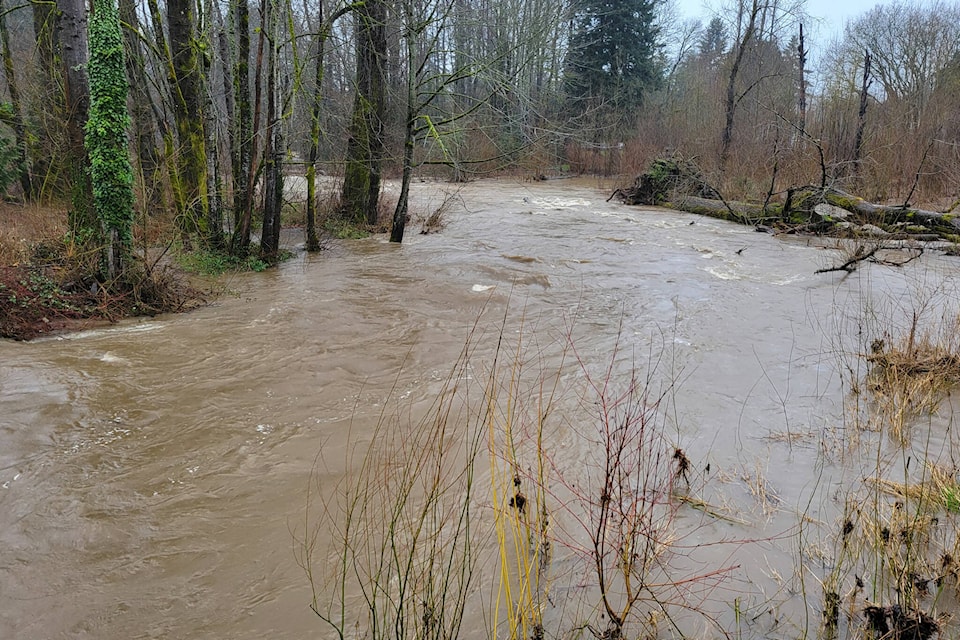Steps should be taken to raise the dikes along the Cowichan River as flooding events become more severe and cause more damage in the years ahead, according to an assessment from Northwest Hydraulic Consultants.
The consultant company was hired by the Cowichan Valley Regional District to assess the river after the major flooding event that occurred in November, 2021.
Jeff Moore, a senior environmental analyst with the CVRD, said in a report to the district’s committee of the whole that the recently completed update to the flood mapping for the lower Cowichan River and Koksilah River also considers increased precipitation and rising sea levels due to climate change, suggesting that in the coming decades, the dike system needs to be able to protect against a flood of 896 cubic metres a second.
RELATED STORY: CVRD DECLARES A STATE OF LOCAL EMERGENCY DUE TO RAIN
The flood in November, 2021, peaked at 627 cubic metres per second on the Cowichan River
“The dike system was not designed for these future flows, so long-term planning should include steps to raise the dikes and continued sediment management to maintain the effectiveness of the dikes,” Moore said.
On Nov. 15, 2021, significant rainfall led to flooding on many rivers and streams throughout the region, and a local state of emergency was declared.
Emergency Management BC approved funding for a number of flood response and recovery activities after the rain event, including a post-flood assessment on the Cowichan River to determine potential repair works that are required, or additional adaptive responses to reduce risk to communities.
The CVRD contracted NHC to conduct the post-flood assessment as well as repair and maintenance of the flood monitors.
The engineering group is also currently undertaking an assessment of the mid and upper river to assess the possibility of flood attenuation and gravel management in that zone to reduce growing downstream effects.
Moore said NHC identified a number of locations where the dikes are subject to erosion or are otherwise in need of maintenance.
He said the consultants’ recommendations for dike upgrades are divided into three time periods.
RELATED STORY: RAIN FINALLY SUBSIDES, BUT FLOOD DAMAGE EXTENSIVE IN COWICHAN
The first calls for short term upgrades over the next five years would be primarily focused on maintenance and dealing with local problems, setting up monitoring and improved institutional coordination and planning, and initiating plans for upgrades to existing protection systems.
The second medium term, from five to 10 years, calls for implementing plans to achieve consistent levels of protection in the region for intermediate future climate change conditions, while the third and long-term strategy would be the implementation of an adaptive, sustainable, long-term strategy to manage future and evolving flood hazards to 2100 and beyond.
Moore said the CVRD’s Cowichan flood management service was established in 2015, with a requisition limit of $150,000.
“The magnitude of required future works are such that this level is insufficient to fund the recommended improvements or ongoing channel maintenance,” he said.
“Staff will return to this committee and provide additional projections in the new year and request direction at that time.”
robert.barron@cowichanvalleycitizen.com
Like us on Facebook and follow us on Twitter
